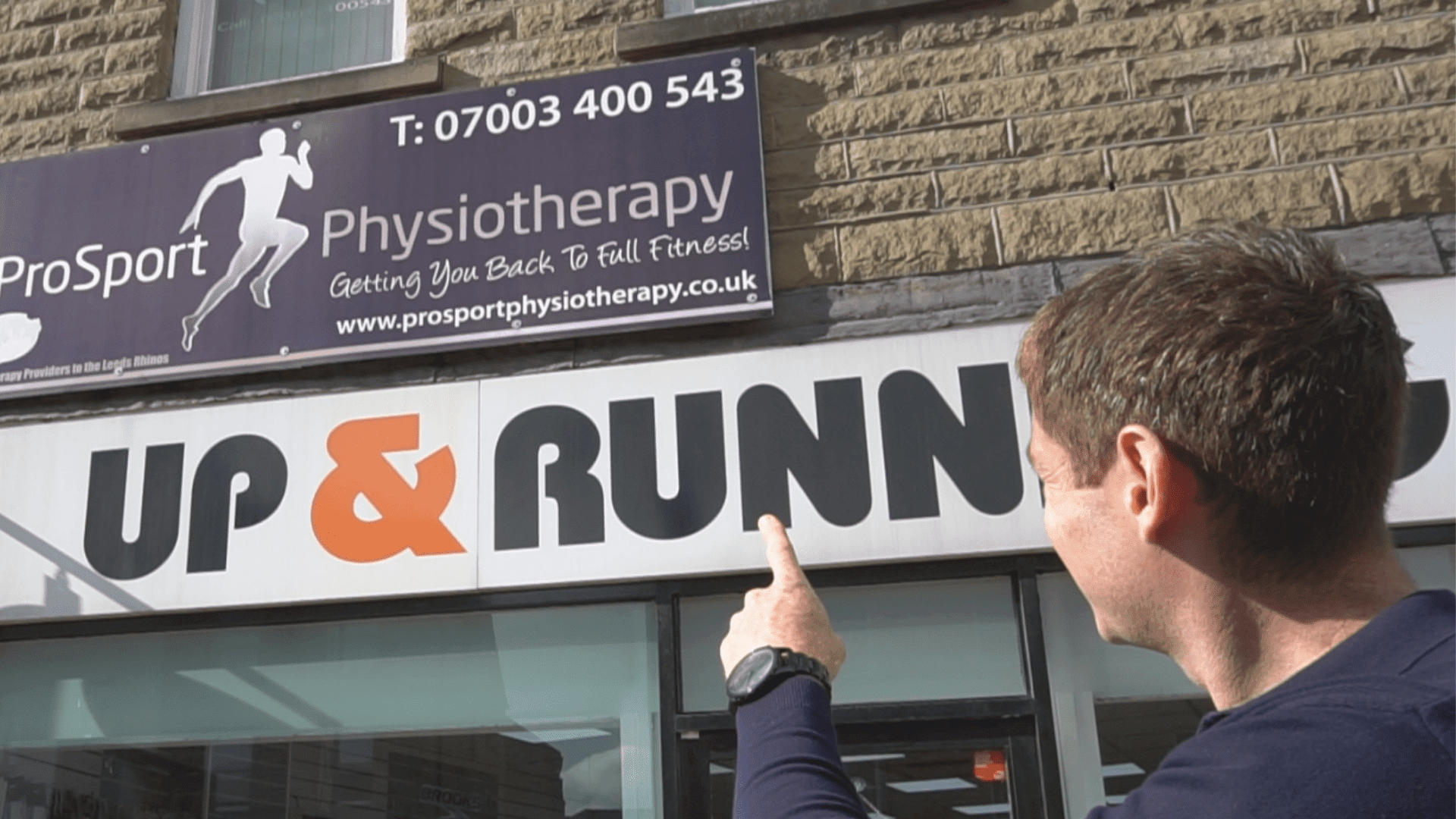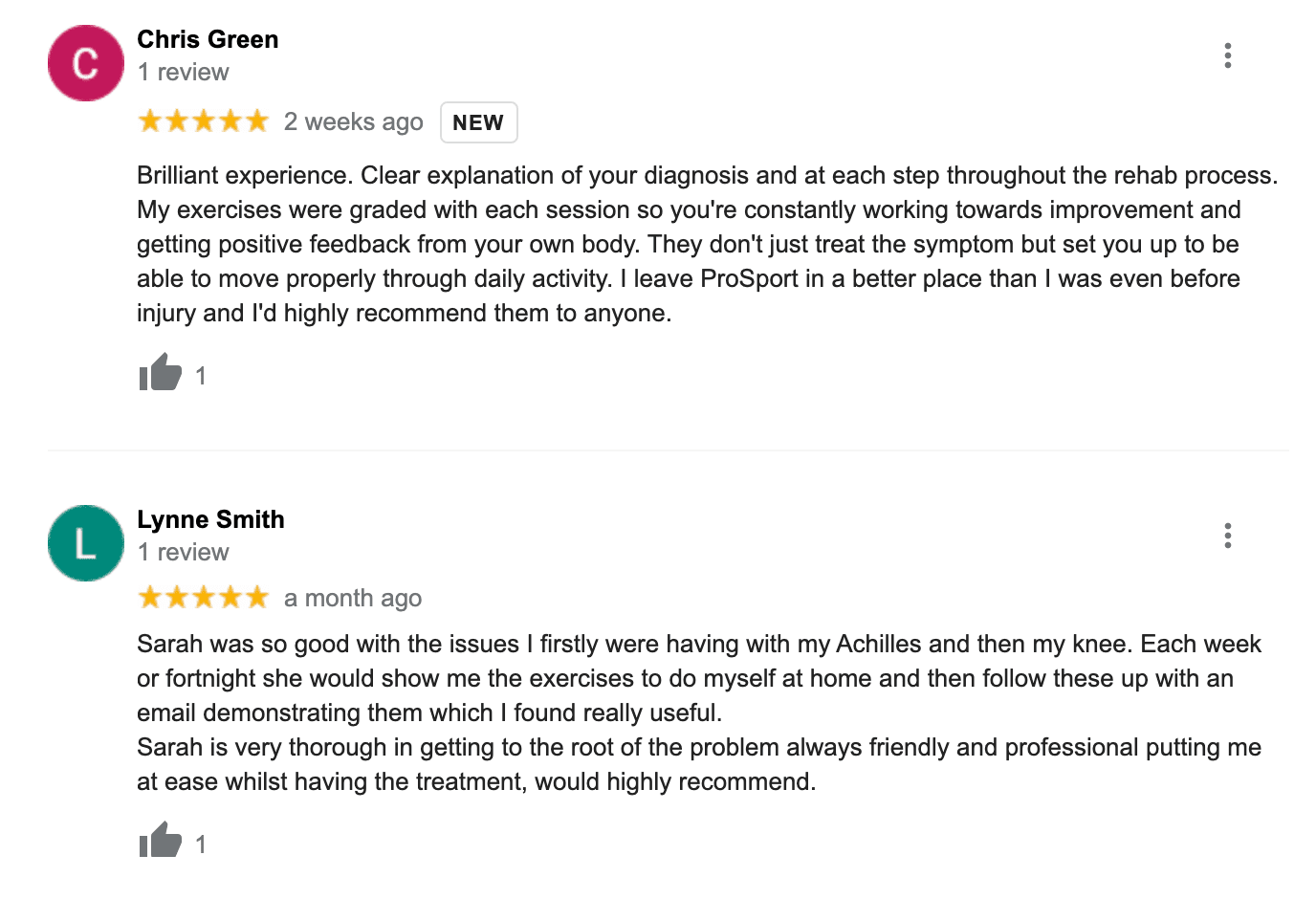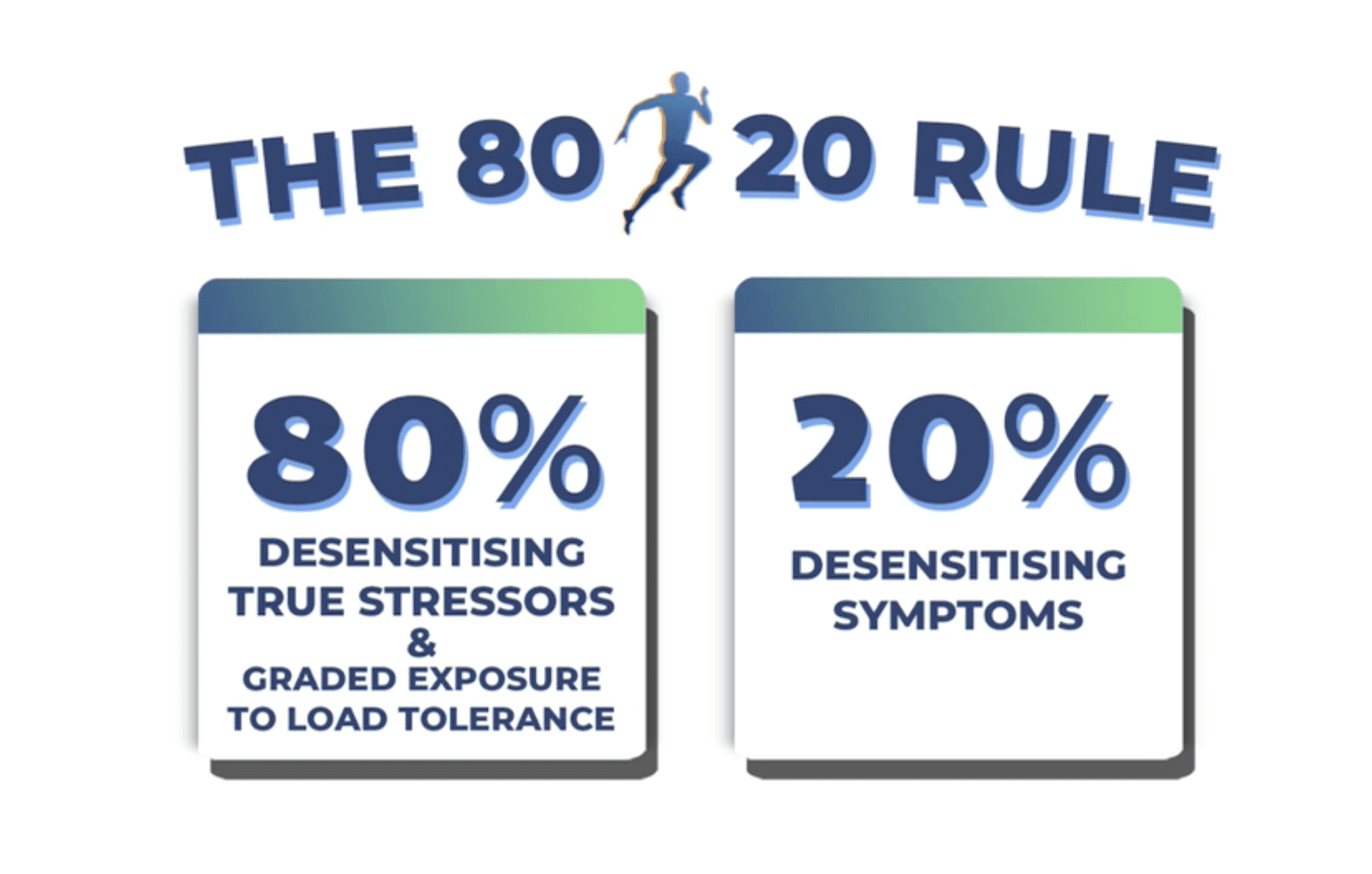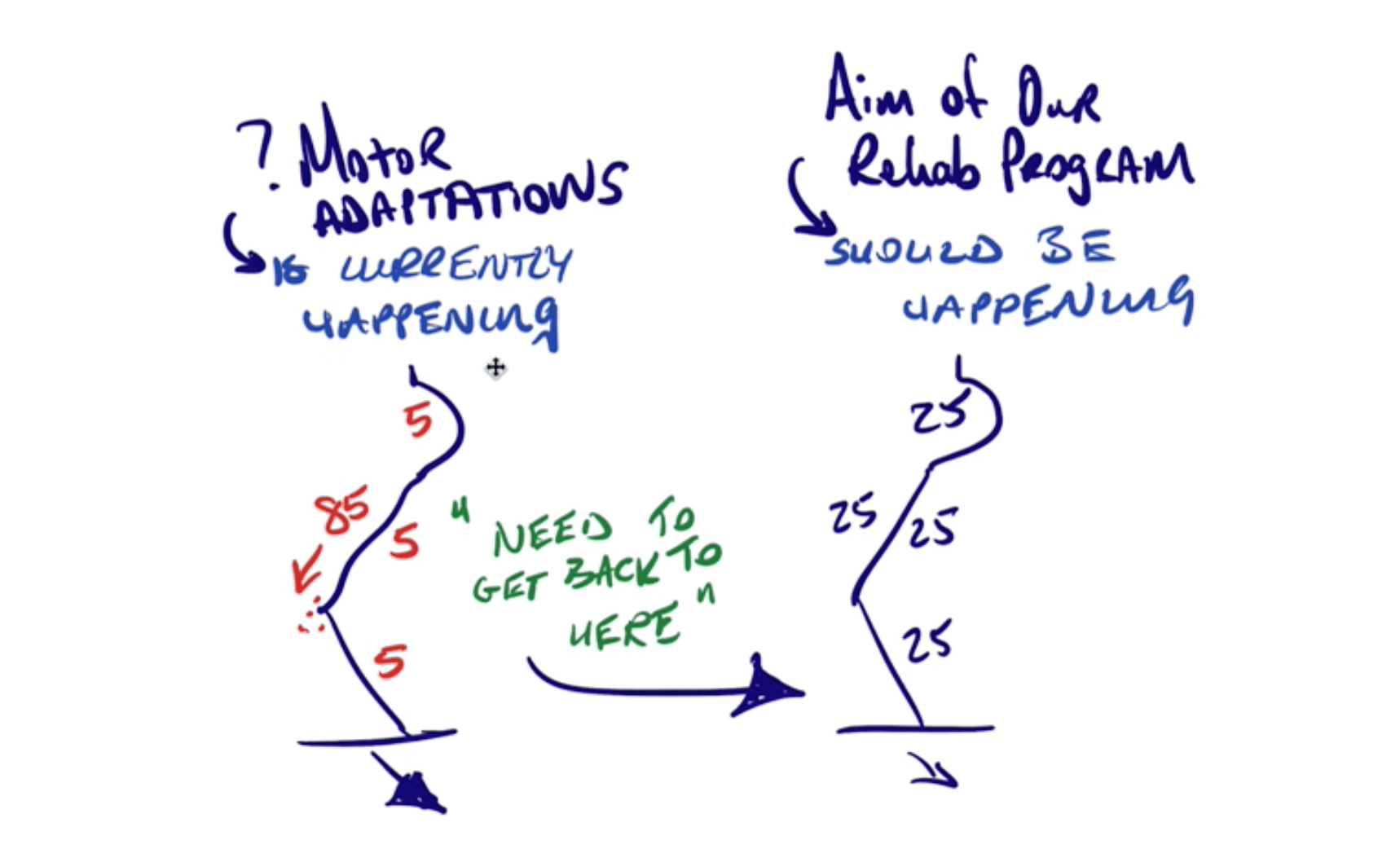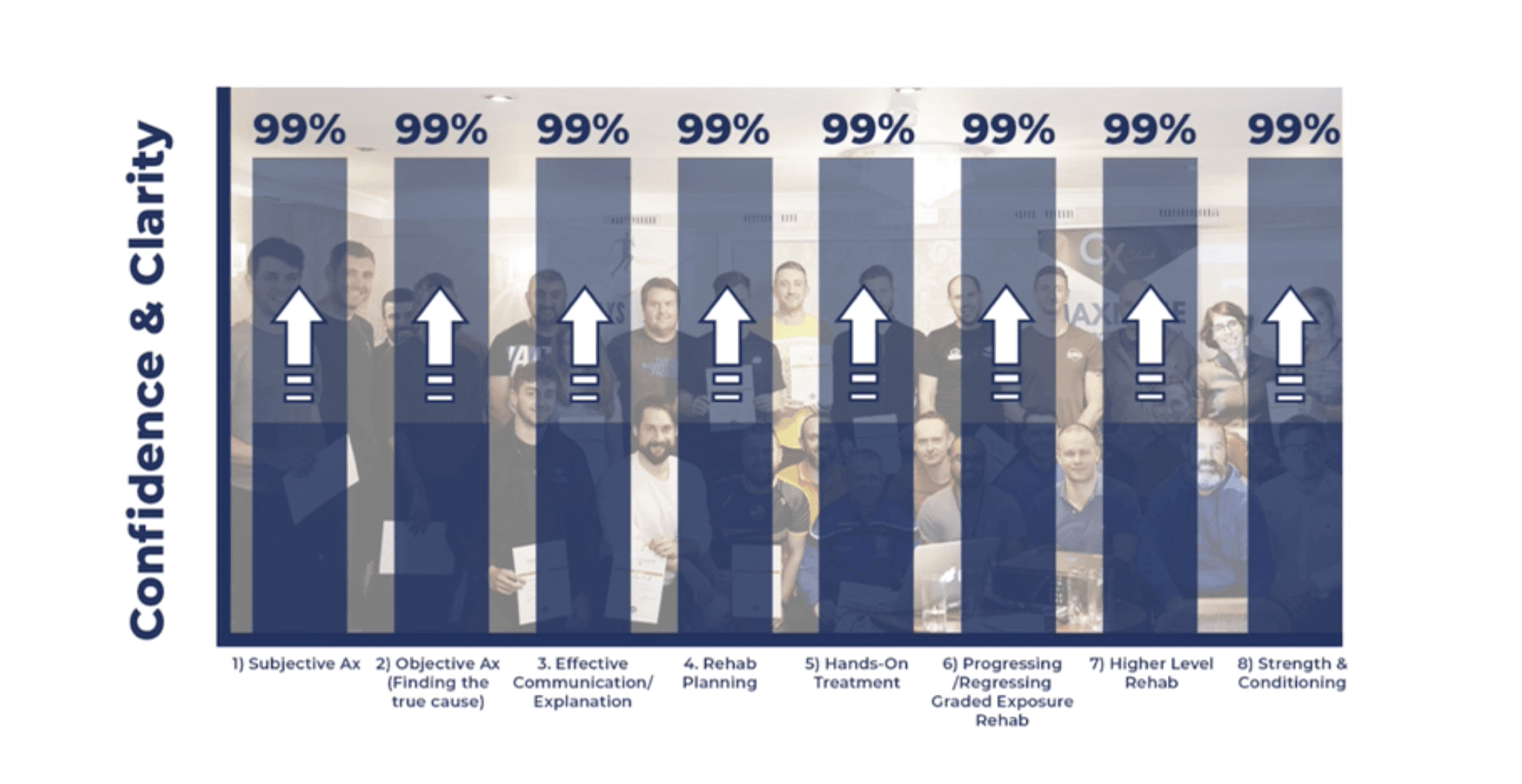
Every physiotherapist wants their clinic to succeed. You pour time, money, and effort into building a practice but without seeing real results, all of that growth comes grinding to a halt.
Over the years I have been lucky enough to work with some of the toughest cases… I say lucky because it has forced me to adapt my work. I quickly realised it was the system that made the physiotherapist, not the exercise or technique.
Building a treatment plan shouldn’t be rocket science. But I can promise you it will always be a mystery if you don’t understand and treat the true stressor.
So today I want to share a powerful rule to focus your time and energy. It will help you find the true cause of your patient’s problem and create treatment plans that get long-lasting results, reviews, and referrals for your clinic.
Read on to find out…
- The basics of referrals.
- What reviews and referrals mean for you.
- What the 80/20 rule is.
- How to implement the 80/20 rule in your physiotherapy practice.
- How research can help your approach.
- Building a treatment plan to reach patient goals.
- Using the 80/20 rule to build resilient patients.
Self-Referral and Primary Health Care
Before we roll right on into implementing the 80/20 rule in your physiotherapy practice we should talk about your patients…
In the UK it used to be the case that most patients with musculoskeletal problems were referred to physiotherapy services by GP practices. The first contact practitioner would assess and deem fit to send a patient for rehab at a physiotherapy clinic.
In most countries and in the UK this still happens. General practitioner referrals for patients with musculoskeletal problems are common but with the rise in NHS waiting times it has never been easier and more attractive to reach out to a private practice. With direct access and self-referrals, your physiotherapy practice has become primary care to your patients.
Physiotherapy self-referral is easy. Patients are cutting out their general practitioner. They have direct access to your services. If someone has low back pain they can simply walk into your private physiotherapy practice for support.
Now, there is a reason for all of this talk of self-referral, primary care, and direct access… All of this means that these patients are key to your physical therapy business. That may sound simple. You may be thinking ‘of course they do’, but think about it.
If GP practices aren’t providing your referrals, who is?
Physiotherapy Reviews and Referrals
With the ease of self-referral and direct access to your physical therapy services, reviews and referrals are the keys to getting more patients through your practice doors. Your patients act as a marketing department. Their word-of-mouth referrals and online reviews are vital.
In a study by Podium, the data found that ‘93% of consumers say online reviews do impact their buying decision’. Sure, many of those people may be buying a new TV or a car but it still applies to your physiotherapy practice.
Get it right and they will tell everyone how incredible their experience was. They will leave outstanding reviews and facilitate the growth that your practice needs to succeed. Get it wrong and you’ll lose these referrals, reviews, and revenue.
So many physiotherapists believe that marketing is the key. The right Facebook advert, the right place on Google search results. It just isn’t the case. It is those lasting results and happy patients that will make or break your practice. As a direct access practitioner, you must get it right.
But it isn’t all about a review or a referral to your physiotherapy service. These results are your reputation as the go-to physiotherapist.
To grow your physiotherapy clinic you need to be providing the best patient care. More importantly, patients need to feel the value that you have given them in life.
So… how does the 80/20 rule fit into all of this?
What Is The 80/20 Rule?
I’m always looking for new ways to improve the way I work and the system we teach in the mentorship. I’m constantly adapting and trying new principles to drive the quality of work and the quality of education for myself and other physiotherapists.
Some years ago, I was reading a book about business and came across the 80/20 rule. The rule essentially allows you to focus on certain aspects of business, economics, and life to maximise productivity.
It took some thought and adjustment but I knew that applying a rule like this could dramatically change the outcomes of my work and my practice. It is slightly different from the economics models but the main focus of organising time and energy still applies.
So, at the ProSport Physiotherapy clinic and throughout the mentorship….
We spend 20% of our time, energy, and focus desensitising the symptoms…
And 80% of our time desensitising the true stressor and giving the patient a graded exposure back to load tolerance.
If you are only ever treating the symptoms then maybe your patient will walk out of your practice. You may feel like you’re having some positive outcomes. But not treating the true cause is a risky business.
All patients with musculoskeletal conditions have a true cause. You need to find it and address it. Set every patient up for success in the real world and every single review will be a 10/10.
Applying The 80/20 To Your Direct Access Physiotherapy Patients
So how does the 80/20 rule apply to your work with patients and musculoskeletal problems?
Well, take your patient with knee pain. They are self-referral. They have direct access. Or have been referred by their medical practitioner. Either way, they are looking for a long-term fix, not a quick win. And this is exactly where the 80/20 rule comes into play.
It is worth noting first that you must rule out red flags. If your patient is a self-referral and hasn’t had GP consultations it is important to eliminate the worst-case scenario. This is the first step for all healthcare professionals so do not forget it.
After ruling out red flags, completing your subjective assessment, and settling some of those symptoms you may begin to hypothesise that the knee pain is caused by other tissues not working as they should.
When the foot hits the floor running, they may be sinking and eccentrically loading through the quadriceps at which point the force goes down toward the tendon and the joint gets unhappy. So you have your true stressor identified and your response should now be to use the 80/20 rule.
Spend 20% of your time would be getting the pain to settle down but 80% of your time and energy to get the rest of the muscles to do their job.
But to do this you need to be looking at the body as a whole without getting overwhelmed….
What The Research Tells Us About Your Knee Pain Patient
Using the 80/20 rule we are focusing 80% of our time desensitising the true stressor and giving the patient a graded exposure back to load tolerance. We want every tissue to be doing its job. But what needs to work to set the knee up for success?
Muscular Strategy In Running
In a 2012 qualitative study, Dorn et al performed a systematic review of muscle interaction throughout running. They found that when the foot hits the floor the soleus and the vastus lateralis have to work together. You want muscle activation from the hamstring, soleus, vastus, and gastroc to take the body weight.
Shear Forces During Hopping Progressions
In a systematic review and data analysis of shear forces in patient groups, Maniar et al, found that during hopping progressions, as the foot hits the floor the soleus has to manage the anterior shear forces and we want the quadriceps and the gastroc to manage the posterior shear forces.
As the foot hits the floor we want the balance at the knee between the soleus, hamstrings, and the gastroc.
Efficient Movement
This research tells us that patients need all of these tissues to move efficiently. If something isn’t playing its part it will only cause more health issues.
So, as a physiotherapist, your approach should be manual therapy or soft tissue stretching to help those symptoms settle down. This is your 20%. Then spend 80% of your time getting everything else doing its job.
It All Starts With The End In Mind
Patients self-refer because they need to. There is one reason that has driven them to your physiotherapy services for support or treatment. One activity that the symptoms are stopping them from doing.
For patients who enter your practice, it could be anything. For your back pain patient, it could mean being unable to sleep at night because of pain. Unable to play in their Sunday league game. Or they want to run around with their kids. We call this the internal motivator and it is anything that compromises your patient’s quality of life.
Starting a treatment plan without the end goal in mind is one of the biggest errors physiotherapists make. If you and your patient don’t have goals then you will only ever be going in circles. Physical therapy must prepare your patients for success in the real world and the activities they are being stopped from doing.
You need it to work from low-level load tolerance to high-level load tolerance. Every physiotherapist must be able to bridge that gap between the lower and higher-level rehab.
Building Resilient Patients
Building resilient patients is the key to reviews, referrals, increased revenue, and a reputation as the go-to physiotherapist. Of course, it is about their health but it is allowing them to be successful in the real world.
Most physiotherapists don’t ask themselves just how resilient their patient is. They get them to a point at which they are pain-free and they think their work and support for the patient is done. You have to get them back to, what Louis Gifford called…
‘thoughtless, fearless movement’
How The 80/20 Rule Fits Into Your Physiotherapy Practice Systems
For those of you who are familiar with the go-to physiotherapist mentorship, you’ll know just how much we stand by our system.
When I first set out to systemise my work in physiotherapy I wasn’t quite sure how I would do it. But after years spent at university and thousands spent on CPD courses, it was clear that all of this information had to be put together.
I created the system to produce repeatable results for even the most complex of cases and acute musculoskeletal conditions. We use 8 simple pillars to guide the way we work. To truly impact every patient in a positive way physiotherapists need to have confidence and clarity in each….
- Subjective Assessment
- Objective Assessment (finding the true cause)
- Effective Communication/Explanation
- Rehab Planning
- Hands-on Treatment
- Progressing/Regressing Graded Exposure Rehab
- Higher Level Rehab
- Strength & Conditioning
If you and your team of physiotherapists have each of these mastered then you can achieve real long-lasting results with all patients and even the most complex of musculoskeletal problems.
But how does the 80/20 rule fit into all of this? Think of it as a facilitator. It allows you to focus your time, energy, and resources on finding and treating the true cause. It allows any physiotherapist to get rid of the guesswork and begin to understand the WHY behind everything they do.
Final Thoughts On Using the 80/20 Rule In Your Physiotherapy Practice
With all this talk of self-referral, direct access, primary care, and GP practices it is easy to lose sight of the most important thing. The patient.
Whether they self-refer or come through a general practice you have to get it right for even the most complex patients with musculoskeletal conditions. Neck pain or back pain, every therapist has seen these overwhelming cases but not everyone gets the outcomes their patients need and they deserve.
Consistent long-lasting results and patient outcomes increase referral rates, reviews, revenue and begin to build your reputation as the go-to therapist.
It is vital that every physiotherapist in your practice is able to implement the 80/20 rule…
If you want to learn more about the Go-To Physio Mentorship, click the banner below and take a look at just how the system can work for you.
Get Your FREE Copy Of The Amazon #1 Bestseller That Holds The Secret To Confidently Treating Any Patient!
Download a Free ‘ebook’ copy of the 8-Step ‘World Cup’ Treatment Plan that helped my private patients achieve full recovery and made me a ‘go-to’ physio for complex cases…
